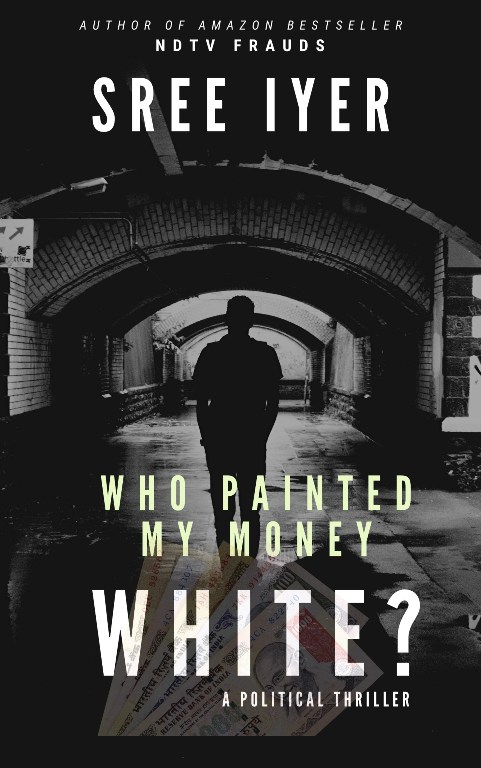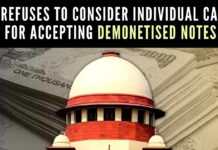
You have been thinking of buying my first book of fiction, Who painted my money white? But you have been putting it off because:
- You are lazy. Nothing wrong with that. I too am – sometimes… but this is a book you want to buy and read. Here is the first chapter to hook you into this fast-paced thriller.
- You do not have Kindle hence you can’t buy. Well, Amazon gives you free Kindle reader apps for all Smartphones and Tablets. Click here to download your app and you are set.
- You are waiting for the paperback and like to read books that way. Here is a suggestion – try reading one e-Book and I guarantee you, you will never read a paperback again. Why? It is the convenience of carrying a 1000 books, in one small electronic device.
Ready? Here you go! Don’t take my word for it – read the reviews on Amazon. The first chapter follows the bitmaps below…
|
INDIA
|
 |
|
REST
|
 |
CHAPTER 1. Deep in the Amazon jungles
It looked like any other office building, except that this one was right in the midst of the Amazon jungle. The rainforest cover was thick enough to make it difficult to predict the time of the day. Deepak Masani swatted away a mosquito that looked substantially bigger than the ones he tennis-batted around in India. He wondered, not for the first time, why he was here. The Finance Minister’s orders had been specific. Mailapore Damodaran had asked him to fly out to Rio De Janeiro, and from there connect up with a private aircraft company that would take him deep into the Amazon. The business was to purchase used Large Examining Printing Equipment (LEPE) machines that could print 32 currency notes per sheet at the rate of 9,000 sheets per hour.
Used and discarded by the United States’ Bureau of Engraving and Printing (BEP), these machines were 144 feet (48 yards) long and could perform the whole process – full sheet examination, letterpress printing functions, insertion of the security thread(s), product verification, and even cutting and packaging of the currency. A marvel of technology. A bloody currency giant.
A total of 15 cameras were installed throughout the machine for taking pictures, verifying watermarks under laser lights and flagging flawed notes. A new machine would cost several millions of dollars; this used one could be bought for a fraction of that price. With creative invoicing and routing it through shell companies, the used equipment would become ‘new’ – both in looks and cost – when it arrived at the shores of India. The balance in the price would be distributed according to a long-held template – 52% to politicians, 23% to the bureaucrats and 25% to the political party in power. The party president, of course, double-dipped – once from the share that went to the politicians and a second time when the money was sent to the party. But what party, really? The president was the party and all funds were controlled by her and her family.
Deepak’s passport was checked against a list before he was shown into a sparse 10 feet by 10 feet room that had only a large-screen display and a laptop with a webcam attached, besides one desk and a chair. The camera was positioned at a comfortable height on the table. This would be his workplace for the brief period of the auction for the machines. This is where he would be placing his bids from.
Deepak was an officer of the well-regarded Indian Revenue Service (IRS). The IRS functions under the overall ministerial command of the Finance Ministry of the Government of India, though it directly reports to its administrative head, the Revenue Secretary. It is tasked with a flurry of duties, ranging from providing tax assistance to taxpayers, tackling fraudulent filing of tax returns and aiding with policy guidance in tax-related matters. The IRS deals with both direct and indirect taxation. But none of these stated objectives explained Deepak’s trip to the Amazon jungles. It seemed like a strange assignment when he was first told about it. But nothing felt straight about this – the more time he spent here, the more he felt alone and clueless.
In his mid-forties with the first greys appearing, Deepak usually had a cheerful disposition. An easy guy mostly, if a bit unambitious too. But he avoided compromises as a principle. So far he had an exemplary, if uneventful, career. His colleagues knew him as an upright and honest officer, a rarity in a service that offers many a safe means to make more than an extra buck. But Deepak would rather take his family on a modest holiday to neighbouring Shimla or Manali (by train, of course) than indulge them to yearly trips abroad, like many of his colleagues did with theirs. He took great care to avoid situations that could taint his spotless reputation. It was with some foreboding, therefore, that he had agreed to make the trip to the remote Amazon jungles to bid for the printing machines. Not that he had much of a choice, what with the Finance Minister insisting that he take up the responsibility. Good feeling or not, here he was on orders from his top boss.
Deepak had been to auctions previously, but this one was like nothing he had seen before. Every bidder was housed in a room and had to show the bid, not as a paddle but in the form of a five-digit code, consisting of numbers and characters – e. g. X7RF9. As he soaked in his surroundings, a mechanical voice announced the start of the process and explained the rules. A video of the item going up for auction would appear on the screen. After a while thereafter, bids would be accepted. Every participant would show their bid (the five-digit sequence) to the webcam for five seconds or so. After the laptop monitor said ‘accepted,’ the wait would begin. There was just that one chance. He placed his bid, and so did the other participants. After accepting all the bids, the laptop spewed out a message, ‘processing’, along with a clip of Tom & Jerry running around a coffee table. He subconsciously clenched and unclenched his fist as the cartoon played on loop.
The animation stopped and he saw a big red X on his screen. His bid had been rejected.
The possibility of precisely such a setback had been anticipated back home by the wily Finance Minister and his trusted aide. Deepak had been briefed to bid another five-digit code in case the first bid failed. There were two more machines to be procured. Presumably, the new bid was of a higher value. Of the three LEPE machines being auctioned, India wanted at least two. With one machine gone, there was no room for error.
After a few other high-priced items, the second LEPE machine came up for auction. Deepak promptly typed in his new code and came out the winner. His bid for the third machine, though substantial in amount, failed. His competitor had outbid him a second time.
It was night in India and Deepak thought it prudent not to call and disturb the minister. Who knew what he could be up to at this time! Instead, he sent a cryptic message that just one of the three machines could be secured. As he walked out of the building, a pretty twenty-something handed him a sealed envelope. He had no idea what it contained, but the contents would later be crucial to the distribution of spoils among various top people. His part in the mission was done and it was time to head back home. As far as he was concerned, he did what he was asked to. There had been nothing fishy with his involvement. He still could not figure why the entire affair had to be conducted this way. Maybe some day he would, but all he wanted for now was to relax and go home.
Continued…
- Indian Parliament’s Special Session is convened to mark the shifting to new Parliament building - September 3, 2023
- Why did Rajat Sharma of India TV not declare that Adani owns more than 16% shares in his channel? - January 29, 2023
- Prannoy Roy to get Rs.605 crore from Adani as per Stock Exchange filing. Why is Income Tax not acting on Roys’ dues of over Rs.800 crore? - January 4, 2023










Please help with the characters! I have got a few of them but not all.
Hi,
Paperback version copy of your book “Who painted my money white” is Unavailable at Amazon,currently. Where else should I source?
It will be coming back online in a few days. Sorry for the inconvenience.
Where can I get a paperback copy of your book Who painted my money white,in amazon only kindle version is available
Coming very soon! Stay tuned. If you happen to be in Bengaluru on the 12th, you can buy it at the 5:30 PM event. 18th at 5:30 PM at Kochi.
Is paperback available in the US?
Dear first chapter is so interesting , I am definitely going to order for paper back coz I can get it on cod as I don’t believe in plastic money. Eagerly Waiting for paper back.